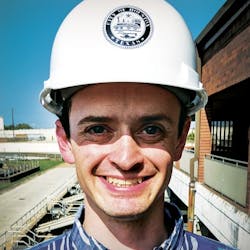Continued Trend
Bob Crossen is managing editor for W&WD and iWWD. Crossen can be reached at [email protected].
Another October and another Water Environment Federation Technical Exhibition and Conference (WEFTEC) has passed. It seems that with each successive conference I attend, the industrial side of water and wastewater treatment is becoming a bigger and bigger talking point. Virtually every meeting I had this year at WEFTEC touched on the industrial side of water and wastewater treatment, advancements in the industry and new projects on the horizon.
And within that are some narrower focuses among those with whom I spoke. Some are primarily focused on the food and beverage industry, particularly dairy facilities, while others are finding success with oil refineries or power plants.
In fact, the power generation side of the industrial sector has some of the most interesting stories and use of technology due to regulations in different parts of the world. Last year, we ran an article about minimum and zero liquid discharge (ZLD) as well as water reuse in the industrial sector, and how Chinese regulations are influencing a change. Topics continue to be of great interest to industry professionals.
Earlier this year, we conducted a Signet Ad Study that included questions about editorial and topics that you, our reader, want to see in future issues. Of those topics, water reuse was the most frequently requested, which makes sense given the nature of the industry.
Most of these facilities are privately owned and operated. Finding ways to do more with the the same or less can have a positive effect on the bottom line of the overarching business. Additionally, many facilities seek to be better neighbors to and stewards of their surrounding environments. They understand that doing so is good for publicity, and that it strengthens their position within the community in which they are located.
On another side of that coin, there is regulatory and compliance pressure to push for better sustainability for these facilities and businesses. Sometimes that comes at a greater cost, as usually is the case with ZLD, where evaporation can lead to tremendous energy expense. Whatever the driver, it seems these trends are here to stay.
Are you finding yourself in similar conversations with your peers in the industry? What topics do you think will dominate 2019? Send us an email with your thoughts at [email protected].
